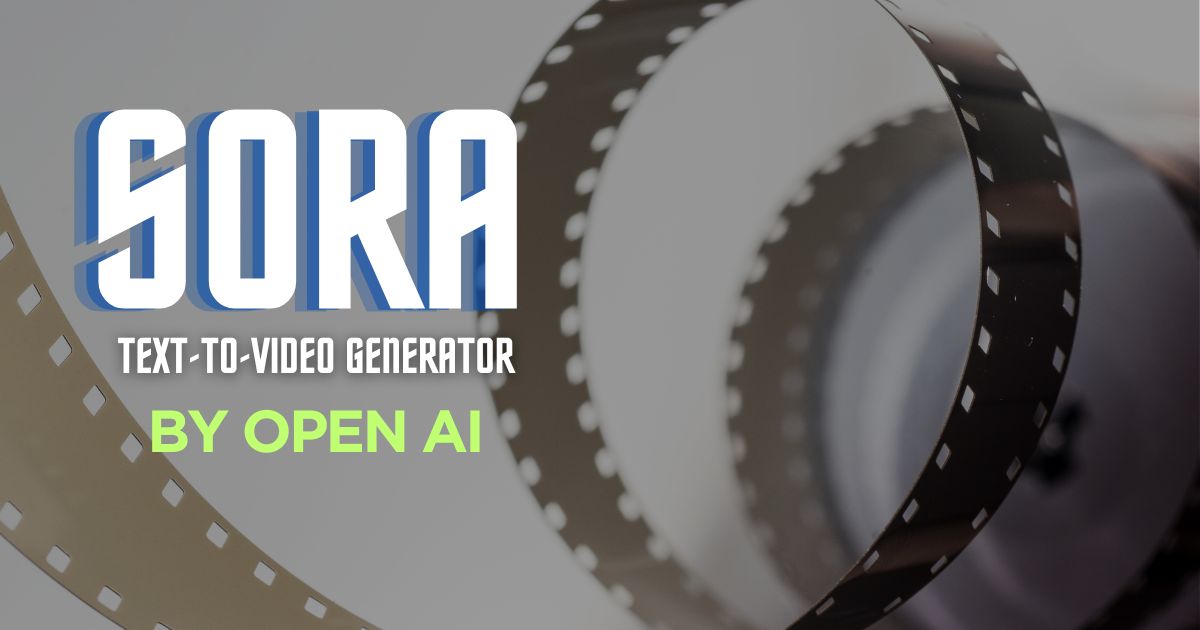
OpenAI, the creator of the popular ChatGPT, has once again made waves in the artificial intelligence (AI) community with the introduction of their new text-to-video generator called Sora. This revolutionary application uses generative AI to immediately generate short videos based on textual inputs. In this article, we will explore the capabilities of Sora, its potential impact on the industry, and the ethical considerations surrounding this technology.
What is Sora?
Sora is an AI tool developed by OpenAI that enables the generation of videos up to 60 seconds long based on written prompts. Using generative AI, Sora can transform text into visually stunning videos. It can also generate videos from existing still images, showcasing its versatility and potential applications.
Generative AI is focused on developing new content. Sora builds upon the success of OpenAI’s ChatGPT and incorporates similar transformative capabilities. By leveraging the power of neural networks and sophisticated algorithms, Sora can produce lifelike and detailed scenes with remarkable accuracy.
The Impressive Quality of Sora Videos
While Sora is not the first text-to-video generator on the market, it has garnered attention for the high quality of the videos it produces. Industry analysts have praised the realism and attention to detail exhibited in Sora-generated videos, emphasizing their superior quality compared to previous attempts in this field.
Fred Havemeyer, head of U.S. AI and software research at Macquarie, highlights the significant advancements Sora represents for the industry. He notes that Sora not only allows for longer videos, up to 60 seconds, but also produces videos that appear more natural and realistic, respecting the laws of physics and the real world. This improvement minimizes the occurrence of “uncanny valley” videos that appear unnatural or fragmented.
Sora’s Public Availability and Current Limitations
As of now, Sora is not readily available for public use. OpenAI is engaging with policymakers, artists, and security researchers to ensure the tool’s safety and to address potential risks. This cautious approach aligns with OpenAI’s commitment to responsible AI development and mitigating the negative externalities associated with generative AI technologies.
Despite the impressive capabilities of Sora, there are still some limitations to be addressed. OpenAI acknowledges that certain spatial and cause-and-effect elements may not be accurately represented in Sora-generated videos. For instance, an action like taking a bite out of a cookie may not result in a visible bite mark on the cookie. While Sora has achieved remarkable realism, further refinement is necessary to enhance these aspects.
The Landscape of AI-Generated Video Tools
OpenAI’s Sora is not the sole player in the AI-generated video space. Companies like Google, Meta, and the startup Runway ML have also demonstrated similar technologies. However, industry analysts underline the notable advancements and superior quality exhibited by Sora-generated videos.
Rowan Curran, a senior analyst at Forrester, highlights the unique opportunities Sora presents to creatives. The consistency and length of Sora’s videos allow for the incorporation of AI-generated elements into traditional content and the creation of full-blown narrative videos from just a few prompts. This opens up new possibilities for content creators and paves the way for innovative storytelling techniques.
Ethical and Societal Implications
While the capabilities of Sora are awe-inspiring, concerns about the ethical and societal implications of AI-generated videos persist. In the context of the potentially contentious 2024 election cycle, the ability to generate realistic videos raises significant challenges. The potential for fraud, propaganda, and misinformation is a pressing issue that must be addressed.
Havemeyer emphasizes that the negative externalities of generative AI will be a critical topic for debate in the coming years. Businesses and individuals alike must confront the ethical dilemmas and potential risks associated with the misuse of AI-generated videos. As governments work to catch up with the rapid advancements in AI, the responsibility for governing AI and managing its risks falls largely on tech companies.
OpenAI recognizes the importance of safety measures and responsible deployment of Sora. The company is actively engaging with domain experts, such as those specializing in misinformation, hateful content, and bias, to adversarially test the model. Additionally, In addition, OpenAI is building tools, such as a detection classifier, to identify misleading information generated by Sora.
Conclusion
Sora, OpenAI’s groundbreaking text-to-video generator, represents a significant leap forward in the field of AI-generated content. With its ability to transform written prompts into visually stunning videos, Sora showcases the immense potential of generative AI. While Sora is not yet available to the public, its introduction has sparked excitement and raised important questions about the ethical and societal implications of AI-generated videos.
As the AI industry continues to evolve, responsible development and thoughtful consideration of the risks associated with AI technologies like Sora are crucial. OpenAI’s cautious approach and commitment to safety are commendable, emphasizing the need for collaboration between tech companies, policymakers, and society at large to navigate the complex landscape of AI-generated content.
By harnessing the power of Sora, creatives can unlock new possibilities in storytelling and content creation. While challenges and limitations remain, Sora represents a remarkable achievement in the field of AI and offers a glimpse into the future of video generation.
Frequently Asked questions (FAQ’s)
How does Sora compare to other text-to-video generators?
Sora stands out for its high video quality, realism, and attention to detail, minimizing the occurrence of unnatural or fragmented videos.
Is Sora publicly available?
No, Sora is not currently available for public use. OpenAI is working with policymakers and researchers to ensure its safety before releasing it.
What are the limitations of Sora?
While impressive, Sora may not accurately represent certain spatial and cause-and-effect elements, and further refinement is needed for complete realism.
You May Like To Read